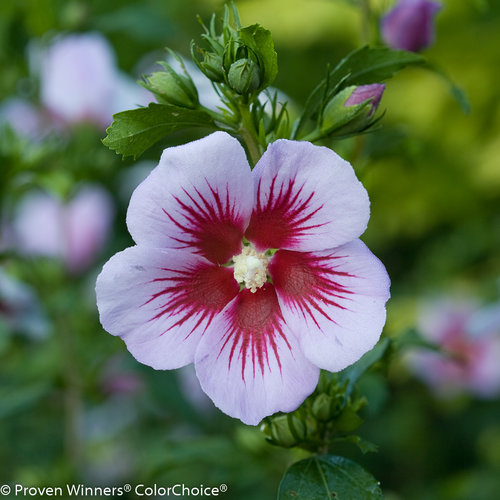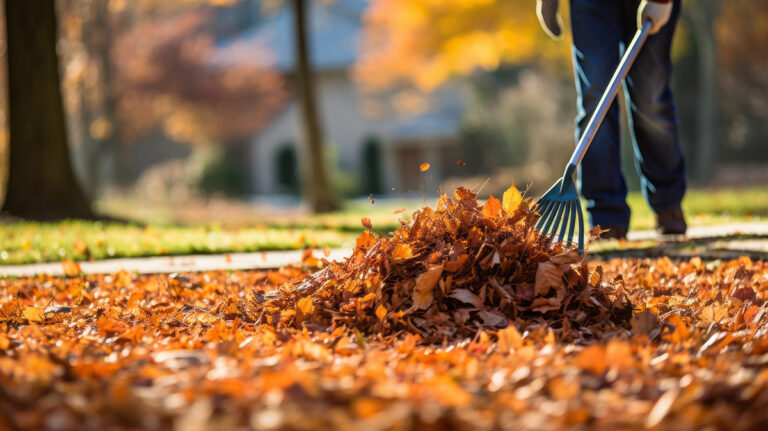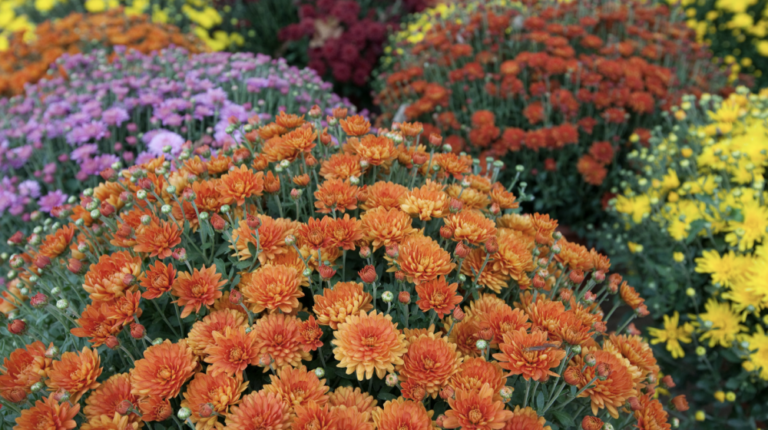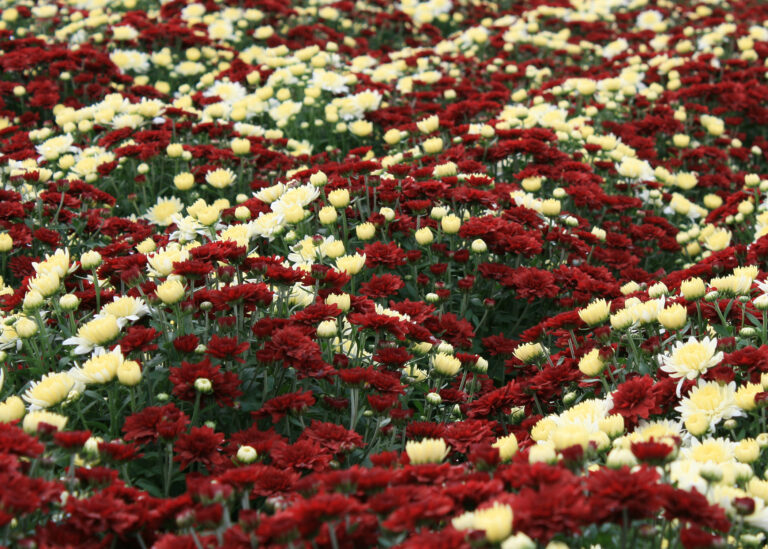
by Bronwynne Bailey, Master Gardener
One of my favorite flowering landscape and garden plants has to be hibiscus, but hibiscus doesn’t refer to only one plant. Hibiscuses are members of the mallow family, which includes our Southern vegetable favorite, okra. It is easy to see the family resemblance when comparing flowers. We are lucky in Mississippi to enjoy flowering hibiscuses from late spring to the fall. These range from hardy to tropical and even two that are called roses—Rose of Sharon and Confederate Rose.
Rose of Sharon is an old-time landscape and garden deciduous plant. Many folks mistakenly call rose of Sharon a hollyhock, as the flowers do look fairly similar. They are big and bold in the landscape, and I’ve seen many planted in unfortunate locations, blocking windows, doors, and porches.

I’d like to review some of the Proven Winners: The Satin Series, Purple Pillar and Pollypetite. To find them in your local nursery, look for the Proven Winners logo on the pots. The Satin Series is a sterile, seedless selection, which means I don’t have to weed out seedlings every year. Color choices include Purple Satin, Azurri Blue Satin, Orchid Satin, and Ruffled Satin. Orchid Satin has large, beautiful, single orchid-pink blooms with a dramatic red eye accent. This plant has the potential to be medium-sized with a mature height greater than 10 feet and a 4- to 6-foot spread.
Most rose of Sharon shrubs have the potential to be large—especially wide—landscape plants. If you have a narrow space, then Purple Pillar is the rose of Sharon for you.

This selection naturally has a columnar growing habit. It will grow to 10 feet tall or more but only 3 feet wide. This narrow growth habit creates very few branches, which means pruning is rarely required except for some tidying up in early spring. One thing I like about the plant is that each stem becomes covered along its entire length with bright-purple blooms, each with a dark purple-red eye. Each flower is a semi-double, having two or more layers of petals with the pistil and stamens visible.
If you still don’t think you have enough room for Orchid Rose or Purple Pillar, I’ve got one more rose of Sharon for you to consider. There are three reasons you ought to grow Pollypetite in a small landscape space. Pollypetite has a dwarf habit that is fantastic, only reaching about 3 to 4 feet tall and wide. This plant has large, lavender-pink flowers that contrast nicely with its dark-green foliage. And my third reason is that Pollypetite is nearly seedless, so weeding is not necessary.

Follow these steps to plant rose of Sharon. Space plants 6-10 feet apart, depending on the variety.
- Dig a hole as deep as the root ball and 2 times wider.
- Remove the plant gently from its nursery pot and loosen the soil around the roots.
- Set the plant into the hole with the top of the root ball at soil level or slightly above.
- Back fill the hole with soil and tamp down slightly to remove air pockets. Water well.
- Mulch with a layer of shredded bark to retain moisture and suppress weeds.
Soil: Rose of Sharon aren’t fussy about soil type or pH; any well-drained soil will do.
Watering: Water deeply but less frequently to encourage deep, healthy roots. Rose of Sharon is drought-tolerant once established.
Fertilizing: Fertilize in early spring by applying a granular rose fertilizer according to the label. Reapply each spring.
Pruning: Rose of Sharon needs little to no regular pruning. If you wish to prune, however, late winter or early spring is the best time to do so. Up to one-third of the plant can be removed at a time.



